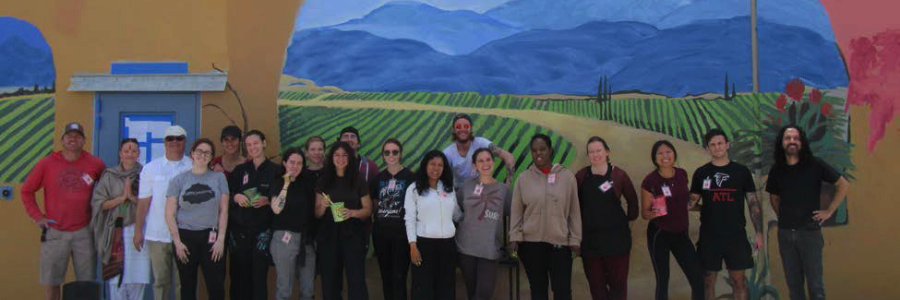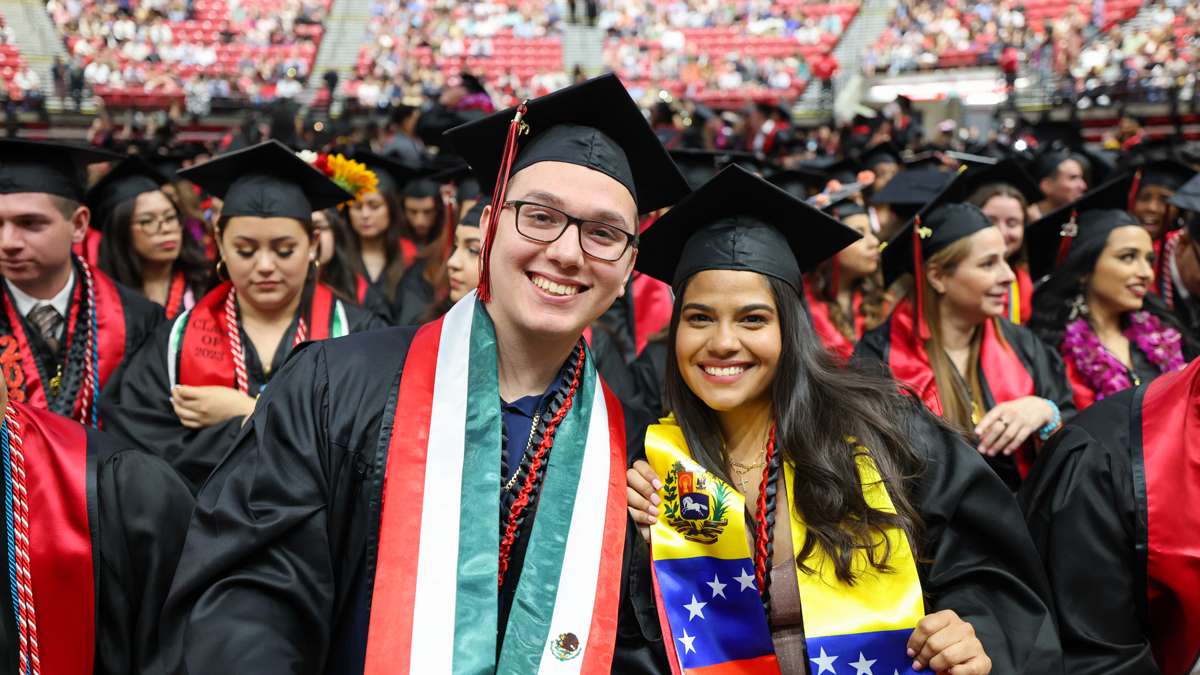Students and Inmates Create Prison Mural

Prison inmates and students from the SDSU School of Art + Design worked together to paint a mural at Richard J. Donovan (RJD) Correctional Facility under the direction of Carlos Castro Arias, assistant professor of painting and printmaking.
On May 11, Castro, along with 20 Art + Design students and 15 inmates, painted a very large mural to cover a gray, concrete wall bordering the prison’s workout yard. The Mediterranean landscape scene, which the inmates had requested, features a vineyard, architectural ruins, bougainvillea bushes, mountains, and blue skies.
Surrounded by prison guards, the students and inmates worked side-by-side to complete the large mural in just one day. The students engaged in fun and meaningful conversations with the inmates while teaching them how to paint.
“I really was not anxious. The inmates are people just like myself,” painting and printmaking student Avia Rose Ramm said. “They were very friendly and fun to talk to. Some of them were very artistic and showed us their work. I could tell painting is an outlet for them like it is for me.”
Castro and his students provided some guidance and instruction to the inmates on painting techniques, but Castro said it was a very fluid, organic painting process and the inmates had a good sense of what they needed to do by reviewing the design plan and mural sketches.
Alan Mobley, associate professor of Public Affairs at SDSU, has worked at Richard J. Donovan Correctional Facility previously with his criminal justice students and approached Castro with the idea to bring art to inmates in the form of a mural painting project. Castro originally hoped to create a class centering around the creation of the mural, but the permitting process to get students onto prison grounds proved time-consuming. Instead, he asked students to volunteer to help with the project during their off-school hours.
Brahman Kyrie, who teaches meditation to Donovan State Prison inmates, helped facilitate the design selection process by acting as a communication bridge between Castro, his students, and the inmates, Kyrie was also instrumental in helping Castro and his students complete the necessary paperwork and approval of materials for the project.
Talks with prison administration about the project began in February of this year and included the inmates giving input on which of Castro submitted designs they liked best.
“It was amazing to see the project come to fruition,” said Nicolette Tuason, who was acting as Community Resources Manager at the facility during the project. “It began as a simple idea to introduce color to the yard and promote peace and serenity in an otherwise tough environment. You definitely get a sense of pride from the inmates who were also a part of the project from start to finish: from its conception to creation and completion. This mural serves as a reminder that they are more than just prisoners. They are artists who dream and hope for a brighter future.”

